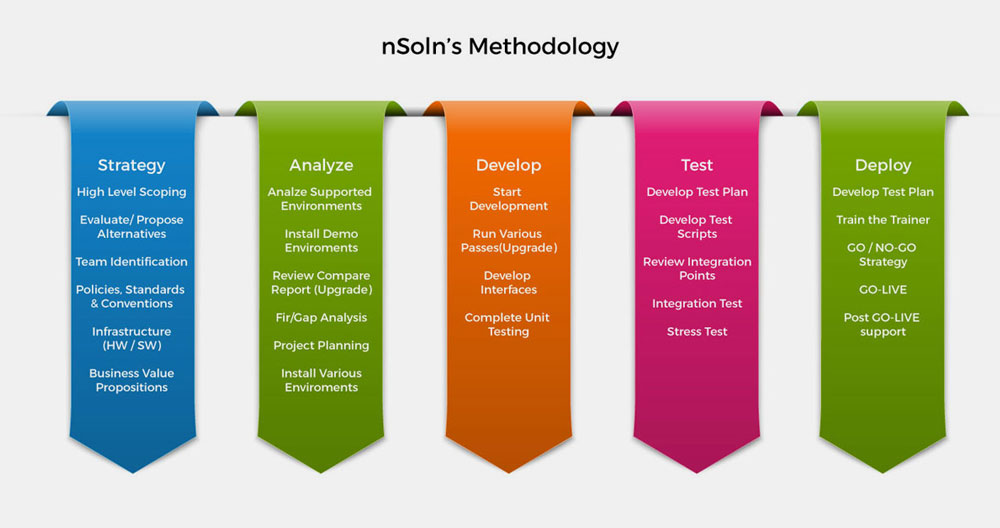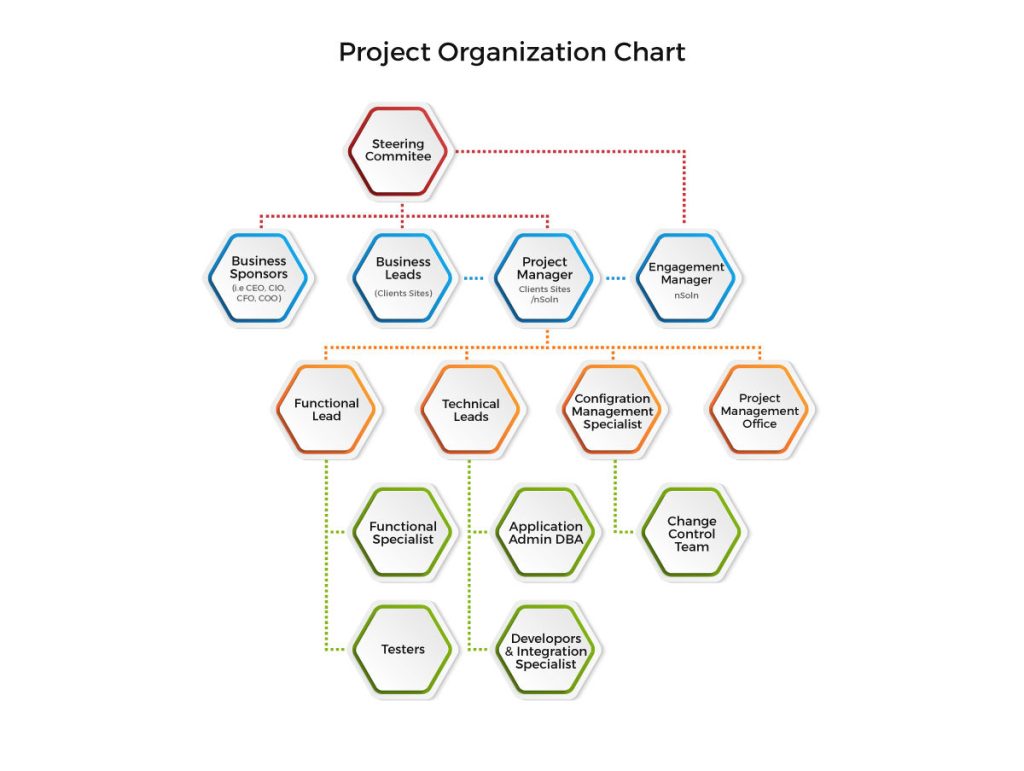nSoln’s Methodology
- Strategy: This phase involves defining the project scope at a high level, evaluating alternatives, identifying the project team, and establishing key infrastructure and business goals. It focuses on setting a strong foundation for the project.
- Analyze: In this phase, the current environment is studied, demo environments are set up, and various assessments (like gap analysis) are performed. This step helps in planning and aligning the project with the organization’s needs.
- Develop: The actual development work begins here. Teams work on upgrading systems, developing interfaces, and ensuring unit tests are completed to validate functionality.
- Test: The testing phase ensures that the developed system works as expected. Test plans are executed, scripts are developed, and various forms of testing (integration and stress tests) are performed to ensure the system’s reliability.
- Deploy: This final phase includes creating a deployment plan, preparing for the system to go live, and providing post-deployment support. Teams also implement training for end-users to ensure a smooth transition.


Project Organization Chart
- Steering Committee: The top-level decision-making body that oversees the project’s direction. It includes high-level executives or stakeholders who guide the project.
- Business Sponsors: Senior executives (e.g., CEO, CIO, CFO, COO) who provide funding and resources for the project. They ensure the project aligns with the organization’s strategic goals.
- Business Leads (Client Sites): Leaders representing the client side of the project. They coordinate between the business requirements and project team.
- Project Manager (Client Sites / nSoln): The individual responsible for overall project execution, ensuring the project is delivered on time, within scope, and on budget.
- Engagement Manager (nSoln): Responsible for managing client relationships and ensuring that the client’s expectations are met throughout the project.
- Functional Lead: Manages the functional aspects of the project, ensuring the business requirements are properly implemented.
- Technical Leads: Oversee the technical execution of the project, such as software development, infrastructure, and integration.
- Configuration Management Specialist: Ensures that project configurations (hardware/software settings) are consistent and controlled.
- Project Management Office (PMO): A support structure that provides project governance, ensuring that processes, documentation, and methodologies are followed.
- Functional Specialist: Works under the Functional Lead, focusing on specific business functionalities to ensure the system works as expected.
- Testers: Team responsible for testing the system to ensure it meets the requirements and is free of defects.
- Application Admin DBA: Manages databases and ensures they are configured and maintained properly for the project.
- Developers & Integration Specialist: The technical team responsible for building and integrating the system components.
- Change Control Team: Manages changes to the project, ensuring any adjustments are tracked, approved, and properly implemented to avoid disruptions
